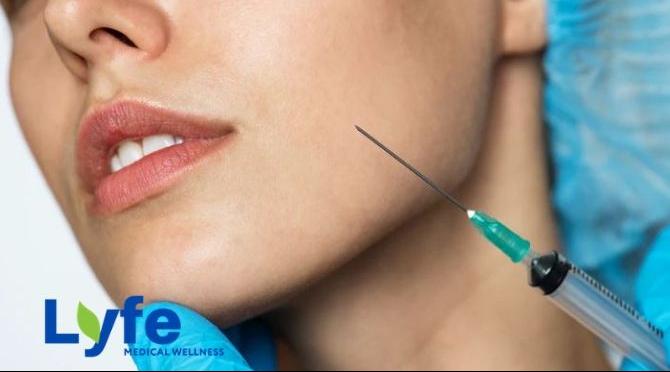Among the myriad of health concerns that individuals face today, oxidative damage stands out due to its pervasive nature and significant impact on our bodies. This article aims to demystify oxidative damage, explore its causes, elucidate its effects on the human body, and provide actionable insights on how to mitigate its harmful impact. By integrating crucial terms such as antioxidant defense, reactive oxygen species (ROS), and oxidative stress, we will navigate through the complexities of oxidative damage and its prevention.
I. Introduction
Explanation of Oxidative Damage
Oxidative damage refers to the harm caused to cells and tissues by reactive oxygen species (ROS) and reactive nitrogen species (RNS). These highly reactive compounds can modify DNA, proteins, and lipids, leading to a cascade of detrimental health effects. The balance between ROS production and the body's ability to counteract or repair the resulting damage is known as oxidative stress. When this balance tips towards an excess of ROS, oxidative stress occurs, prompting damage to cellular components and contributing to various diseases.
Importance of Understanding Oxidative Damage
Grasping the concept of oxidative damage is crucial, as it lays the foundation for implementing strategies to combat it. Understanding the role of oxidative stress and antioxidant defense mechanisms enables individuals to make informed lifestyle and dietary choices that can significantly mitigate the risk of oxidative damage and its associated health issues.
II. What Causes Oxidative Damage
Free Radicals and Their Role in Oxidative Damage
Free radicals, particularly ROS and RNS, are at the heart of oxidative damage. These molecules, including singlet oxygen and other reactive species, can initiate chain reactions that damage cellular structures and DNA.
Sources of Free Radicals
Free radicals arise from both endogenous processes, such as the metabolism of oxygen, and exogenous sources, including environmental stress, pollution, UV radiation, and unhealthy dietary choices. The body's metabolism of reactive oxygen species, alongside external factors, contributes to the formation of free radicals.
Consequences of Excessive Free Radicals
An overabundance of free radicals leads to oxidative stress, which plays a significant role in the aging process, the development of chronic diseases, and damage to DNA, proteins, and lipids. Oxidative stress is also linked to inflammation, further exacerbating the risk of disease.
III. How Oxidative Damage Affects the Body
Impact on Cells and Tissues
Oxidative damage to cellular components can disrupt normal cellular function, leading to cell and tissue damage. This damage is a key factor in the aging process and contributes to the pathogenesis of numerous diseases.
- Inflammation: Triggers inflammatory responses, contributing to a cycle of damage and further oxidative stress within tissues.
- Fibrosis: Promotes tissue fibrosis by stimulating the deposition of extracellular matrix components, leading to organ dysfunction.
- Regenerative Capacity: Diminishes the regenerative capacity of tissues, affecting healing processes and tissue renewal.
- Systemic Disease Progression: Plays a systemic role in the progression of diseases such as arteriosclerosis, liver cirrhosis, and chronic kidney disease by exacerbating tissue and organ damage.
- DNA Damage: Oxidative stress leads to mutations by damaging DNA, impairing cellular function and potentially resulting in uncontrolled cell proliferation or apoptosis.
Contribution to Aging
Oxidative stress accelerates the aging process by damaging DNA, lipids, and proteins, which are essential for cell renewal and function. This degradation by oxygen and other reactive species is a primary driver of the visible and physiological signs of aging.
- Accelerated Aging: Oxidative stress accelerates the aging process by causing cumulative damage to DNA, lipids, and proteins essential for cell renewal and function.
- Visible Signs of Aging: Contributes to the visible signs of aging, such as wrinkles, loss of skin elasticity, and age spots, through the degradation of skin cells and extracellular matrix components.
- Physiological Decline: Leads to physiological decline in organ function, decreased immunity, and reduced metabolic efficiency, hallmark traits of aging.
- Chronic Disease Risk: Increases the risk of age-related chronic diseases by perpetuating damage and dysfunction in cells and tissues over time.
Link to Chronic Diseases
Oxidative stress and inflammation serve as pivotal contributors to the onset and progression of a spectrum of chronic diseases, underscoring the intricate link between cellular damage and long-term health consequences. The relationship between oxidative stress and chronic diseases is multifaceted, with the oxidative modification of cellular components playing a central role in disease initiation and progression.
- Cancer: Oxidative stress can lead to DNA damage, including mutations and strand breaks, which are critical events in the initiation of cancer. The oxidative environment fosters tumor development by promoting cell proliferation, angiogenesis, and metastasis, while simultaneously impairing the body's immune response to malignant cells.
- Cardiovascular Diseases: In the context of cardiovascular health, oxidative stress contributes to the pathogenesis of atherosclerosis, hypertension, and heart failure. Oxidative modification of lipoproteins, particularly low-density lipoprotein (LDL), is a key event in the development of atherosclerosis, facilitating the buildup of plaques within arterial walls. Additionally, oxidative stress affects endothelial function, leading to impaired vasodilation and increased blood pressure.
- Diabetes: Oxidative stress plays a significant role in the development and complications of diabetes by impairing insulin signaling and glucose uptake, which exacerbates hyperglycemia and contributes to the development of insulin resistance. Furthermore, prolonged oxidative stress can lead to damage of pancreatic β-cells, reducing insulin production.
- Neurodegenerative Disorders: In neurodegenerative diseases such as Alzheimer's disease, Parkinson's disease, and amyotrophic lateral sclerosis (ALS), oxidative stress is implicated in the accumulation of misfolded proteins and neuronal damage. Oxidative damage to neurons and the supporting glial cells contributes to the progressive loss of neurological function characteristic of these disorders.
Understanding the connection between oxidative stress, inflammation, and chronic diseases highlights the importance of managing oxidative stress levels through lifestyle choices, dietary interventions, and, where appropriate, medical treatments. By addressing oxidative stress, we can potentially delay the onset, reduce the severity, or even prevent the development of these debilitating conditions.
IV. Protecting Against Oxidative Damage
Antioxidants and Their Role
Antioxidants serve as the body's natural defense mechanism against the detrimental effects of oxidative stress, effectively neutralizing harmful free radicals. The antioxidant defense system is a complex network that includes both enzymatic and non-enzymatic components, each playing a vital role in maintaining cellular health and preventing oxidative damage.
- Enzymatic Antioxidants: These are proteins produced by the body that directly neutralize reactive oxygen species (ROS). Key enzymatic antioxidants include superoxide dismutase (SOD), which converts the superoxide radical into oxygen and hydrogen peroxide; catalase, which then breaks down hydrogen peroxide into water and oxygen; and glutathione peroxidase, which reduces peroxides while oxidizing glutathione, one of the most important antioxidant molecules in cells.
- Non-Enzymatic Antioxidants: This category comprises various molecules found in our diet that can scavenge free radicals. Vitamins C and E, glutathione, carotenoids, and flavonoids are prime examples. They donate electrons to free radicals, neutralizing them and preventing them from causing cellular damage. These antioxidants also play a role in regenerating other antioxidants, like returning vitamin E back to its active form after it has been oxidized.
An innovative approach to bolstering the body's antioxidant capacity is through Vitamin C IV therapy. This treatment involves the intravenous infusion of high doses of Vitamin C, providing several benefits:
- Direct Antioxidant Supply: IV therapy delivers Vitamin C directly into the bloodstream, bypassing the digestive system and ensuring higher bioavailability than oral supplementation. This allows for immediate utilization and absorption by the body's cells, offering potent antioxidant protection against oxidative stress.
- Enhanced Cellular Defense: At high concentrations, Vitamin C can effectively neutralize a variety of reactive oxygen and nitrogen species, providing comprehensive protection to cells and tissues from oxidative damage.
- Supports Repair and Regeneration: Vitamin C is crucial for the synthesis of collagen, aiding in the repair of damaged tissues and supporting the integrity of skin, blood vessels, and bones.
- Boosts Immune Function: High doses of Vitamin C can enhance the immune system's ability to fight infections and recover from illnesses, partly due to its antioxidant properties and its role in immune cell function.
Vitamin C IV therapy represents a powerful adjunctive treatment for enhancing the body's antioxidant defenses, particularly in conditions where oxidative stress plays a significant role. By incorporating this therapy alongside a diet rich in natural antioxidants and maintaining healthy lifestyle choices, individuals can significantly reduce the impact of oxidative stress, promoting overall health and well-being.
Lifestyle Changes to Reduce Oxidative Damage
Lifestyle modifications such as avoiding smoking, reducing exposure to pollution, exercising regularly, and managing stress can significantly decrease the production of reactive oxygen species and enhance resistance to oxidative stress.
Importance of Enhancing Antioxidant Defenses for Anti-Aging and Immunity
Strengthening the body's antioxidant defenses is a key strategy in combating oxidative damage, with significant implications for anti-aging and immune support. Enhanced antioxidant protection helps safeguard cellular integrity, slows down the aging process, and bolsters the immune system's ability to fend off infections and diseases. This is achieved through a combination of advanced therapeutic approaches, such as Vitamin C IV therapy, and lifestyle interventions aimed at reducing exposure to environmental stressors known to increase oxidative stress.
Conclusion
In wrapping up, it becomes clear that understanding and countering oxidative damage is not just beneficial but essential for maintaining our health and warding off disease. The strategies and insights provided here pave the way for a life less burdened by the adverse effects of oxidative stress, especially for those of us navigating life's challenges in the vibrant and health-conscious community of Phuket. At Lyfe Medical Wellness, we're committed to your journey towards optimal health. Our comprehensive range of health and wellness services is designed with your well-being in mind, offering personalized care and evidence-based solutions to enhance your antioxidant defenses, support anti-aging, and boost your immunity.




